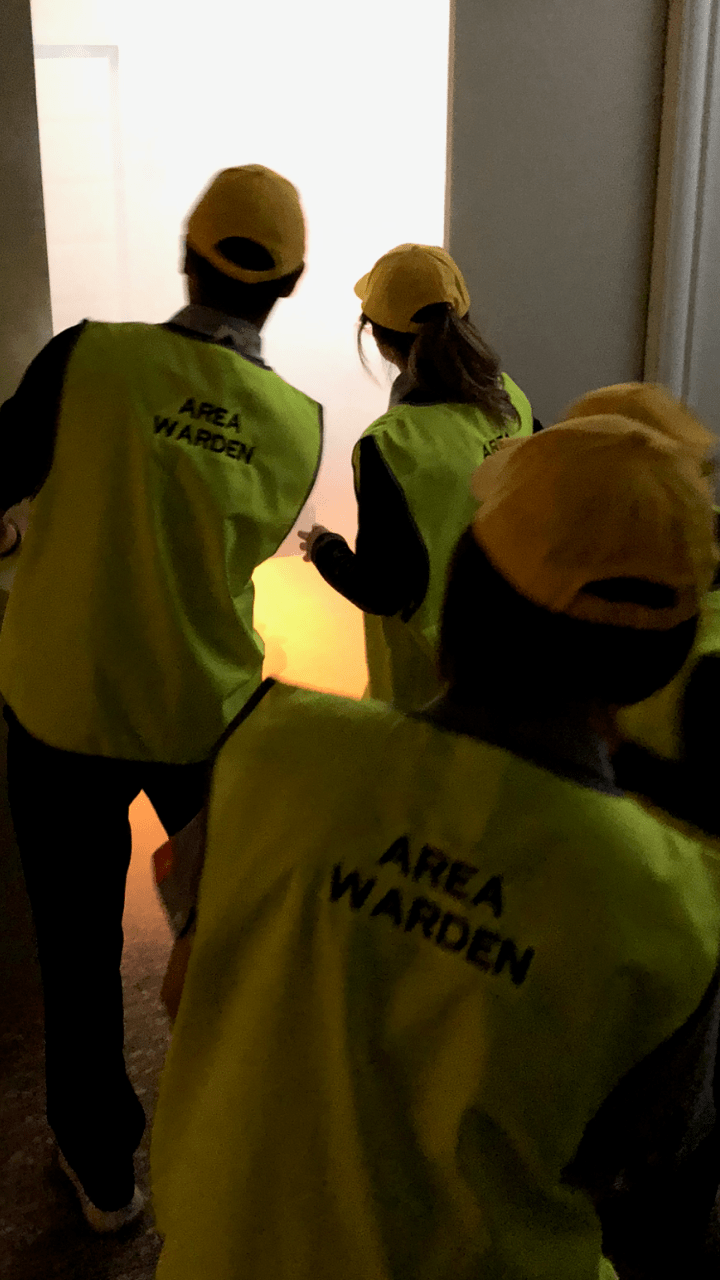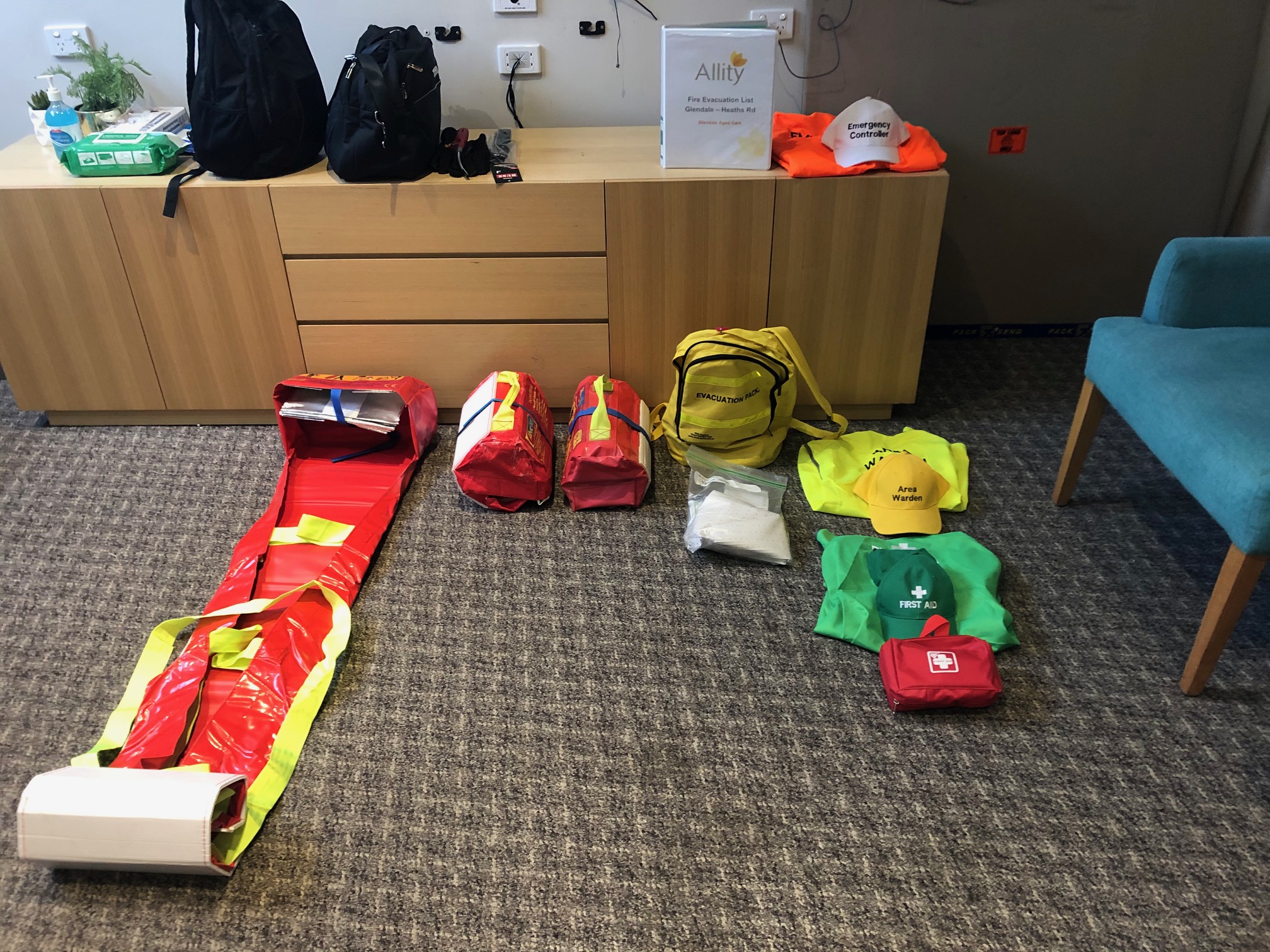
Safe commercial building evacuations: leading safe evacuations in Australia’s tallest workplaces

Home to corporate headquarters, law firms, financial institutions and multinational companies, high-rise towers dominate the skyline In Australia’s central business districts. They’re complex environments, and when something goes wrong, evacuating safely becomes a serious challenge. Hundreds, sometimes thousands, of people may need to move quickly through stairwells, across multiple levels and into crowded city streets.
In those moments, wardens from the building’s Emergency Control Organisation (ECO) are the ones guiding the response. Their actions shape whether an evacuation is smooth and controlled or chaotic and unsafe. This article explores how warden training equips people to lead under pressure, what challenges they face in tall buildings, and the lessons learned from real-world drills and exercises.

Actions on alarm: immediate response matters
The first minutes of an emergency set the tone for everything that follows. Wardens need to know exactly what each alarm means, what checks to perform and how to secure their designated areas.
In our programs, wardens practice the “actions on alarm” until the sequence becomes second nature. They learn to:
- Distinguish between the alert tone and evacuation tone
- Secure their area and account for occupants
- Communicate rapidly with ECO colleagues
- Lead calm but decisive evacuations when required
Wardens also learn to manage different groups – co-workers, managers, contractors and visitors – each with different levels of familiarity with the building. A visitor may not know the exits. A contractor may be focused on securing equipment. The warden’s role is to cut through hesitation and provide clear direction.
Managing large-scale movement
As an example, evacuating a 30-storey tower in a busy CBD is about managing movement on a massive scale. The challenges include:
- Preventing congestion and bottlenecks in stairwells
- Keeping evacuees calm and focused despite stress
- Prioritising vulnerable occupants using Personal Emergency Evacuation Plans (PEEPs)
- Coordinating with security teams and other ECO members across multiple floors
- Relaying stairwell conditions and progress back to the Chief Warden at the fire control room
During one staged evacuation exercise by Emcorp in Sydney’s Martin Place, wardens faced a serious challenge: eight levels attempted to evacuate simultaneously after a security incident triggered a call to evacuate. Stairwells quickly began to congest. Using the procedures and scenario training provided by Emcorp, wardens were able to stagger the flow of evacuees, reduce risk by identifying and assisting those with mobility issues and maintain safe, steady movement. It was a reminder that large-scale evacuations aren’t solved by theory – they’re solved by real-time decision-making.
Communication and multi-level coordination
In a high-rise emergency, communication is the backbone of safety. Wardens need to provide live updates to the Chief Warden, who in turn relays essential information to emergency services.
Through our integrated training, wardens practice:
- Using communications infrastructure to report status floor by floor
- Logging and reporting which levels are clear and which need continued assistance
- Escalating medical emergencies or presenting hazards quickly
- Coordinating updates so the Chief Warden can brief Fire Rescue or Police the moment they arrive
This is both best-practice and part of compliance with workplace health and safety legislation under the WHS Act 2011. A strong flow of information ensures that emergency services can take over effectively, backed by accurate intelligence from inside the building.
From evacuation to assembly
A safe evacuation doesn’t end at the exit door. Once occupants are outside, wardens still have critical roles to play. Training covers how to:
- Direct evacuees to paths of travel and designated assembly areas or dispersal zones
- Conduct headcounts and provide clear reports on missing persons
- Prevent coordinated re-entry until the site has been cleared by emergency services
In practice, this means wardens are still managing people long after the alarm stops sounding. They become the link between evacuating staff, site security and emergency services – ensuring continuation of safety until the all-clear is given.

Beyond fire: planning for wider risks
While fire remains the most common evacuation scenario, today’s commercial facilities face broader risks that demand equally robust training. Emcorp’s warden programs also cover:
- Workplace intruder procedures for hostile intruder scenarios, where wardens help secure spaces and manage communication until authorities arrive
- Lockdown procedures for external or internal high risk scenarios, where wardens help secure the facility or internalised spaces, and manage cover and/or concealment and communication until police and emergency services take over
- Shelter-in-place procedures for external hazards such as hostile protests, hazardous materials or severe weather events
- First aid and CPR training, so wardens are prepared if someone is injured in transit or collapses during an evacuation
- Scenario testing and drills that replicate real conditions, from stairwell blockages to communications impacts and security incidents
This ensures wardens are compliant with AS 3745 and prepared for the realities of modern risk management and business continuity.
Why training matters
The real test of a warden training program is how it performs under pressure.
- Compliance: Meeting AS 3745 – 2010 and WHS requirements
- Readiness: Wardens confident to act decisively when seconds matter
- Resilience: Workforces that can adapt and continue operations after disruption
- Duty of care: Protecting staff, contractors and visitors in line with safety management obligations
- Reputation: Avoiding the fallout from poorly managed emergencies that can damage public trust
When hundreds or thousands of people rely on wardens to lead, training is the difference between confusion and control.

What Emcorp has learned
Our work with clients across major business districts Australia-wide highlights several consistent lessons:
- Preparation must be practical – drills in the actual building create lasting confidence.
- Coordination is everything – wardens on different levels need to think like one team.
- Communication saves time – structured reporting prevents duplication and errors.
- Training never stands still – risks evolve, and so must the way wardens are prepared.
These lessons apply not only to commercial high-rises but also to aged healthcare facilities, retail complexes and industrial sites – each with their own unique evacuation challenges.
Emcorp’s integrated approach
At Emcorp Group, we view fire and emergency training and management as a complete system, not a one-off exercise. Our services include:
- Complete building emergency compliance programs
- Warden training programs
- Evacuation drills and scenario testing
- Emergency (procedure) Plans and records compliance
- Evacuation diagrams
- Workforce training in first aid and CPR
- Guidance for compliance with AS 3745, AS 4083 and AS 1851
- Site risk assessments
We work across commercial, health and aged care, retail and industrial-resource facilities and locations, tailoring programs to the environment and the people within it. The goal is simple: create wardens and workforces that are ready to act.
Building confidence, one warden at a time
Evacuating a high-rise building in the heart of a city is never simple. But with trained wardens, it can be directed, safe, calm and efficient.
By investing in professional fire and emergency management training, organisations protect their people, strengthen compliance and safeguard continuity.
And when any alarm sounds, it’s the wardens – prepared, practiced and confident – who make all the difference.
Every organisation is different. Let’s build a strategy that fits yours.
From site-based training to enterprise-wide planning, we tailor our approach to your needs.
